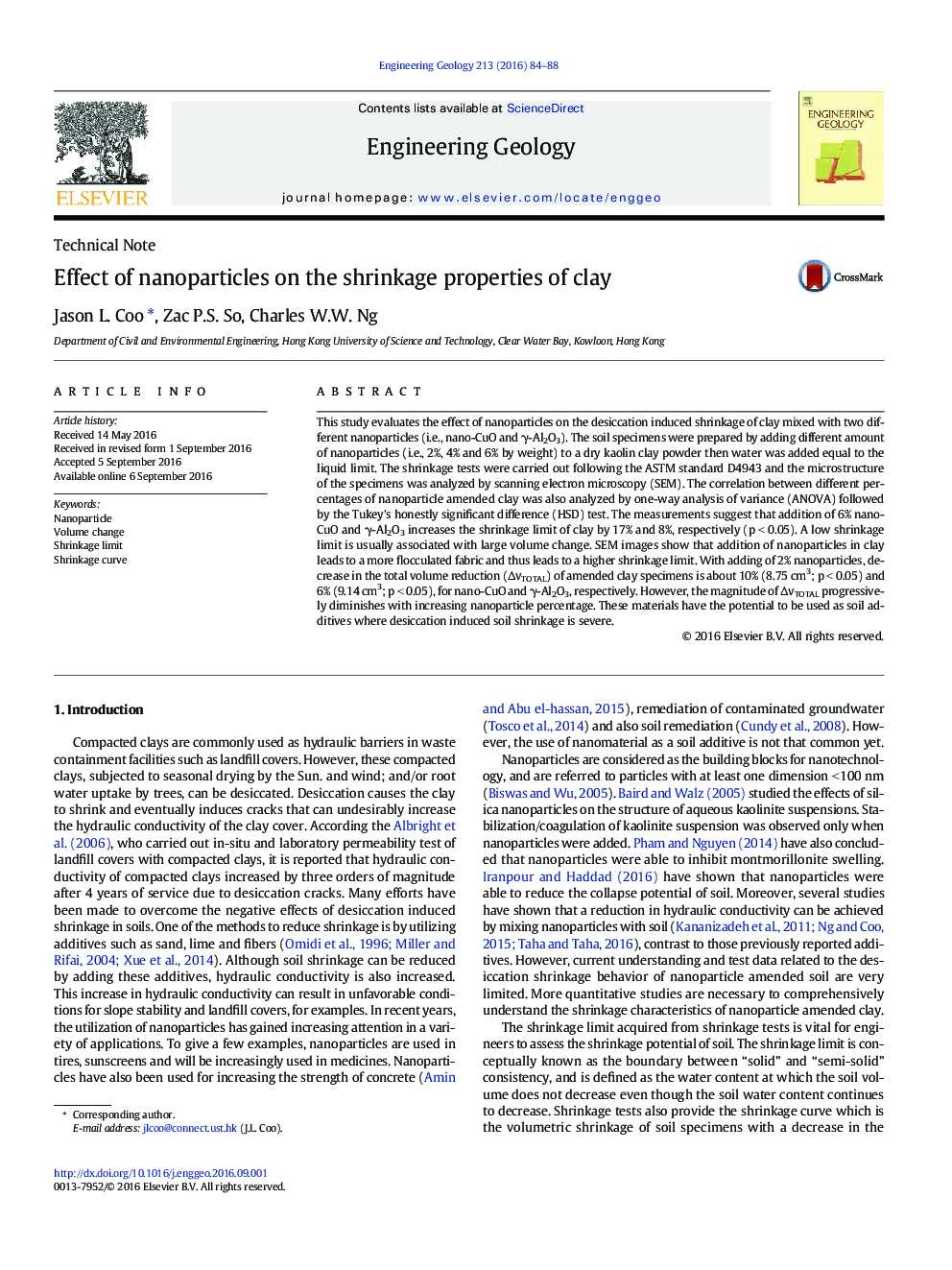| کد مقاله | کد نشریه | سال انتشار | مقاله انگلیسی | نسخه تمام متن |
|---|---|---|---|---|
| 4743083 | 1641772 | 2016 | 5 صفحه PDF | دانلود رایگان |
• Evaluated the effect of nanoparticles on the desiccation induced shrinkage of clay.
• Decrease in volume reduction of nanoparticle amended clay specimens during desiccation.
• Potential of nanoparticles to be used as soil additives for the reduction of soil shrinkage during desiccation
This study evaluates the effect of nanoparticles on the desiccation induced shrinkage of clay mixed with two different nanoparticles (i.e., nano-CuO and γ-Al2O3). The soil specimens were prepared by adding different amount of nanoparticles (i.e., 2%, 4% and 6% by weight) to a dry kaolin clay powder then water was added equal to the liquid limit. The shrinkage tests were carried out following the ASTM standard D4943 and the microstructure of the specimens was analyzed by scanning electron microscopy (SEM). The correlation between different percentages of nanoparticle amended clay was also analyzed by one-way analysis of variance (ANOVA) followed by the Tukey's honestly significant difference (HSD) test. The measurements suggest that addition of 6% nano-CuO and γ-Al2O3 increases the shrinkage limit of clay by 17% and 8%, respectively (p < 0.05). A low shrinkage limit is usually associated with large volume change. SEM images show that addition of nanoparticles in clay leads to a more flocculated fabric and thus leads to a higher shrinkage limit. With adding of 2% nanoparticles, decrease in the total volume reduction (∆vTOTAL) of amended clay specimens is about 10% (8.75 cm3; p < 0.05) and 6% (9.14 cm3; p < 0.05), for nano-CuO and γ-Al2O3, respectively. However, the magnitude of ∆vTOTAL progressively diminishes with increasing nanoparticle percentage. These materials have the potential to be used as soil additives where desiccation induced soil shrinkage is severe.
Journal: Engineering Geology - Volume 213, 4 November 2016, Pages 84–88
